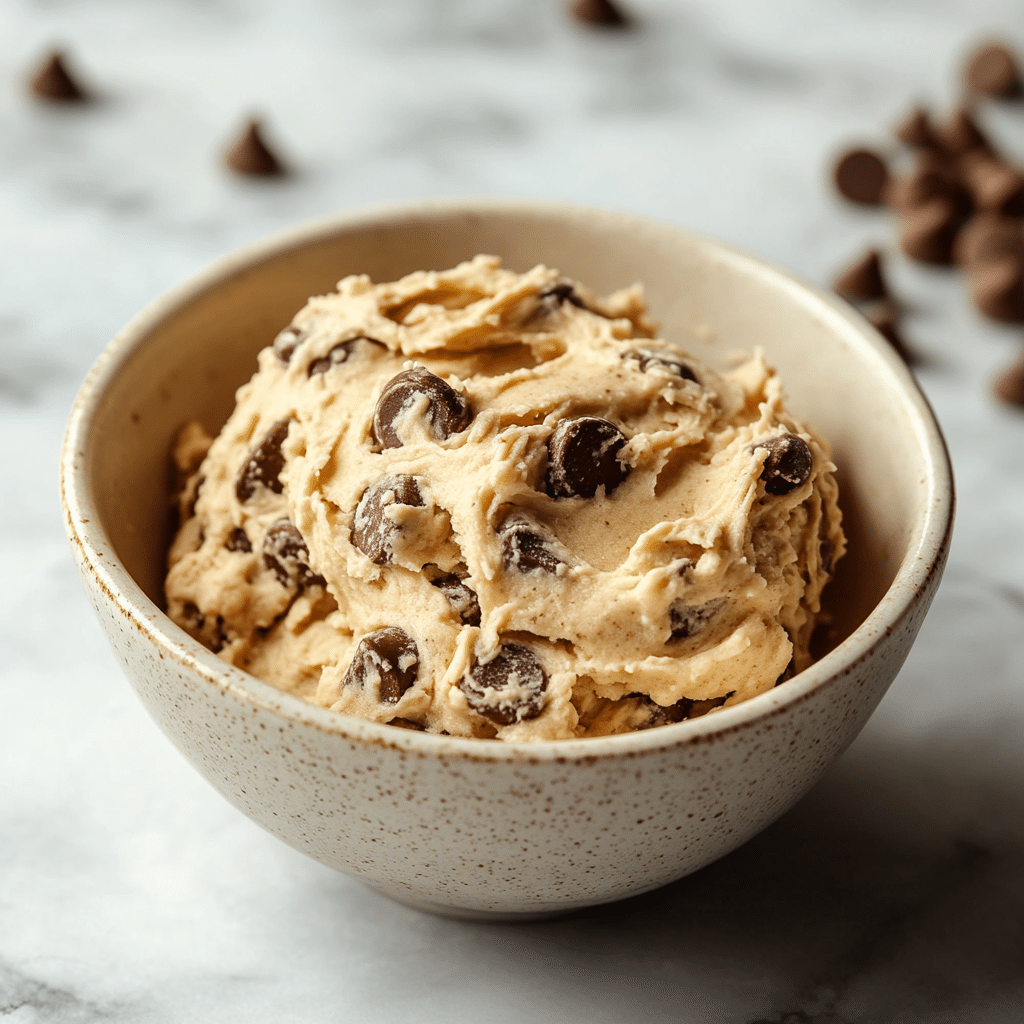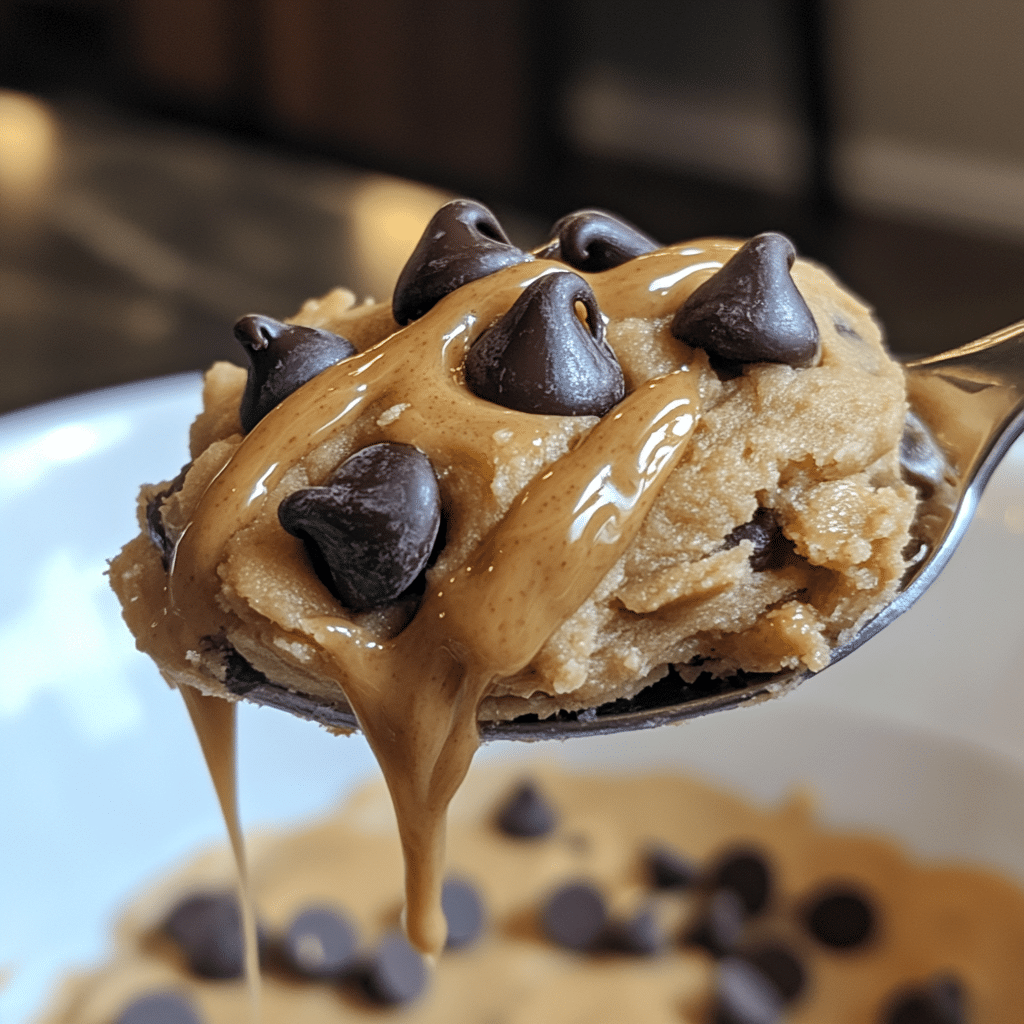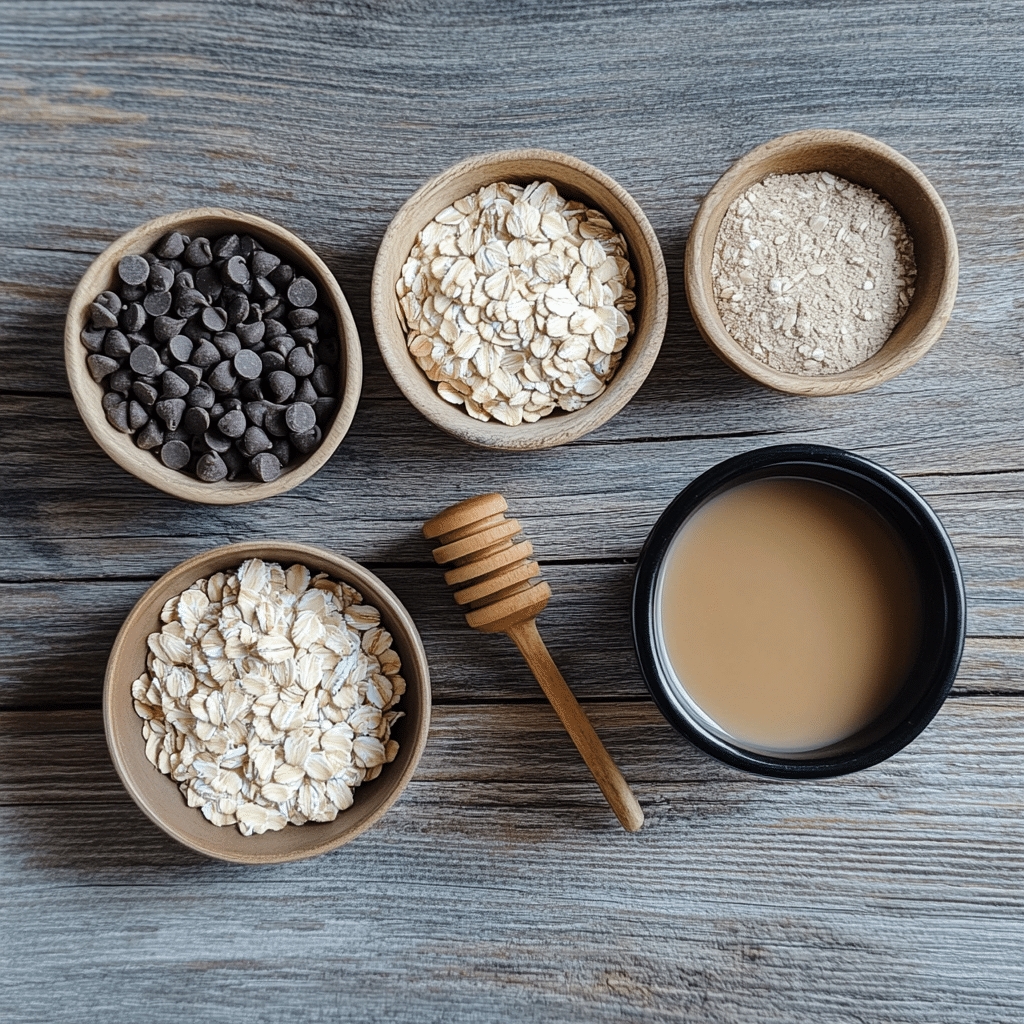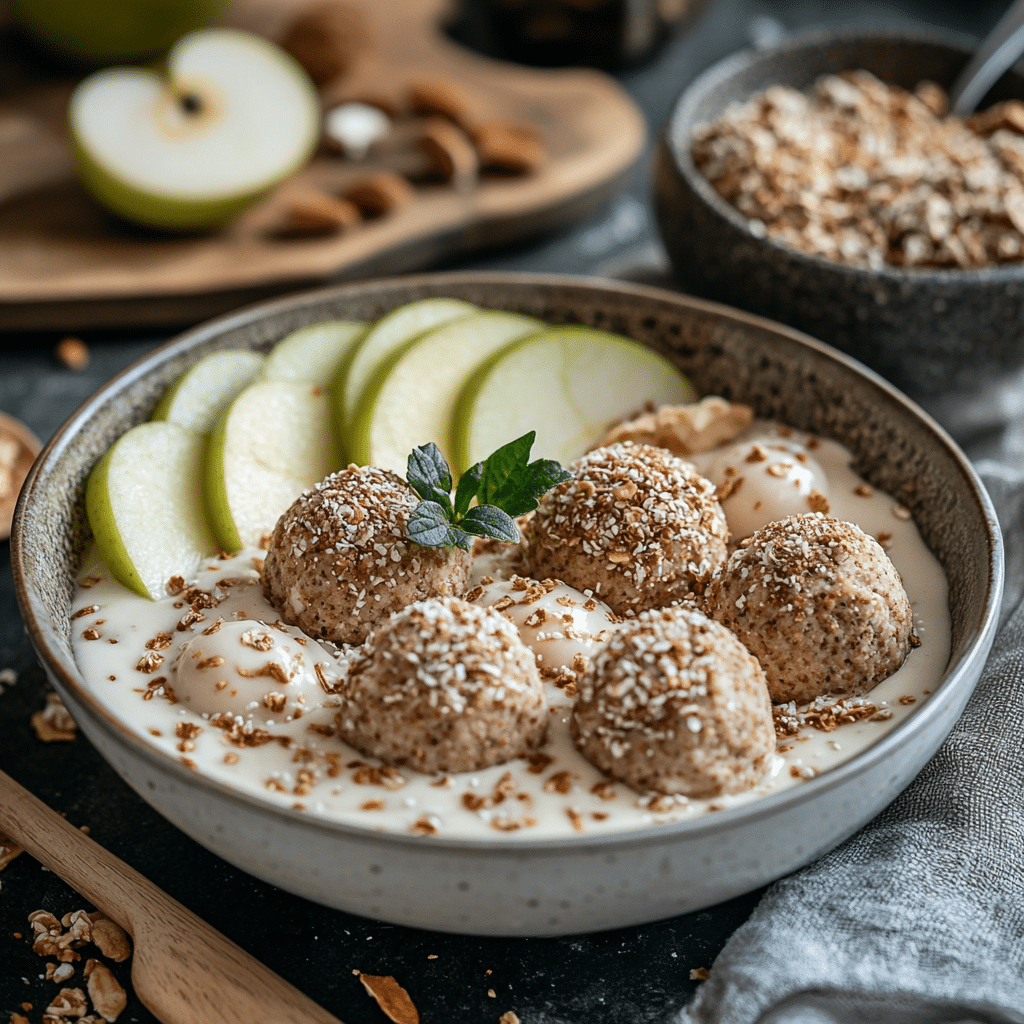Protein cookie dough is the delicious, guilt-free treat everyone’s talking about—and for good reason. This no-bake dessert combines the creamy, chewy texture of traditional dough with the powerful punch of high-quality protein, making it perfect for anyone who wants to satisfy their sweet tooth without derailing their health goals.
Packed with wholesome ingredients like protein powder, nut butter, and natural sweeteners, it’s more than just a snack—it’s a smart, functional fuel source for your body. Whether you’re crushing workouts, chasing after kids, or just want something sweet but macro-friendly, protein cookie dough is a simple way to indulge while staying on track.
In this complete guide, you’ll learn:
- What protein cookie dough is and how it differs from the traditional kind
- The top health benefits of choosing high-protein desserts
- How to make your own at home (plus storage tips)
- Nutritional info, top store-bought options, creative serving ideas, and more
Looking for inspiration? Try this ricotta cheese dessert roundup for other health-conscious treats with a creamy twist.

Table of Contents
Table of Contents
What is Protein Cookie Dough?
What Makes Protein Cookie Dough Different?
Protein cookie dough is not your average indulgence. While traditional cookie dough is often loaded with processed sugar, butter, and raw eggs, this high-protein alternative swaps in nutritious, safe-to-eat ingredients that offer fuel and flavor.
What sets it apart? It’s made using protein powder—such as whey, casein, or plant-based options—combined with nut butters like almond or peanut butter, oat or almond flour, and sweeteners like stevia or honey. It mimics the creamy, chewy texture you crave, but without the health trade-offs.
Here’s a clear side-by-side breakdown:
| Feature | Traditional Cookie Dough | Protein Cookie Dough |
|---|---|---|
| Raw Egg | Yes | No (safe to eat raw) |
| Main Base Ingredient | White flour, butter | Protein powder, nut butter |
| Sugar Content | High | Low or naturally sweetened |
| Average Protein (per serve) | 1–2g | 10–15g+ |
| Suitable for Fitness Diets | No | Yes |
| Calories per Scoop | 200–400+ | 150–250 |
This makes protein cookie dough a perfect fit for high-protein snacks, fitness-focused desserts, or balanced mid-day bites.
Check out our creamy ricotta-based dessert for another example of how indulgence and nutrition can go hand in hand.
The Rise of Protein-Enhanced Desserts
In recent years, protein-rich desserts have gained massive popularity. People are no longer satisfied with treats that only taste good—they want options that support their goals. From gym-goers to busy professionals, many are swapping traditional sweets for smarter snacks like whey protein cookie dough, plant-based doughs, and other macro-friendly treats.
Trends driving this shift include:
- Growing demand for functional food options
- Increased focus on muscle recovery and satiety
- The rise of low-sugar, high-protein lifestyles
- Influence of fitness influencers and dietitians online
In fact, social media platforms are flooded with creative versions of homemade protein cookie dough—some using vegan ingredients, others loaded with chocolate chips and superfoods.
Don’t miss our pan-cooked orange roughy recipe if you’re also searching for high-protein meal ideas to balance your sweet snacks.
Whether you’re mixing it up at home or grabbing a store-bought option, protein cookie dough proves that dessert can work just as hard as you do.
Benefits of Protein Cookie Dough
A Healthier Alternative to Sugary Treats
When you’re craving something sweet, it’s easy to reach for cookies or chocolate bars. But if you’re aiming to eat clean or hit your daily macros, those choices can wreck your progress. That’s where protein cookie dough steps in—a treat that doesn’t just taste good, but actually fuels your goals.
Instead of loading up on refined sugar and saturated fat, this protein-packed dough offers:
- Sustained energy from complex carbs and healthy fats
- Muscle-repairing amino acids from whey or plant-based protein
- Low-glycemic sweetness that avoids sugar crashes
It’s especially helpful for:
- Post-workout recovery (pair it with a shake for a complete recovery meal)
- Afternoon slumps (without the jittery highs of sugary snacks)
- Healthy desserts that don’t sabotage your progress
If you’re looking to swap out empty calories for something more functional, this is a top-tier solution. And for days when dessert is a must? This dough delivers without the guilt.
Learn more about our chicken Alfredo crockpot dish that balances protein and flavor just like this dough does in dessert form.
How It Helps With Muscle Recovery and Satiety
Protein is the key building block of muscle, and consuming enough—especially after workouts—is critical. Protein cookie dough offers a convenient, enjoyable way to increase your intake without needing to cook a full meal.
Here’s how it helps:
- Muscle Repair: After strength training, your body needs protein to rebuild fibers. Whey-based or casein-based doughs deliver complete proteins loaded with BCAAs.
- Appetite Control: Protein slows digestion, which keeps you full longer. A couple of scoops of this dough can curb late-night snack cravings better than sugary treats.
- Convenience: No baking, no cleanup, just grab and go.
Let’s say you’ve just finished a strength training session. Instead of skipping a meal or grabbing fast food, a scoop of protein cookie dough gives you that sweet reward—while feeding your muscles what they need.
And here’s the bonus: it’s also a great option for kids, busy professionals, or anyone who wants to improve their snack game.
Discover great ideas like our ricotta-based healthy dessert collection that shows you how indulgence and nutrition can live in harmony.
Key Ingredients in High-Quality Protein Cookie Dough

Best Types of Protein to Use (Whey, Plant-Based, etc.)
Not all protein cookie dough is created equal. The quality of the protein you use can make a huge difference—not just in flavor and texture, but in nutrition too.
Here’s a quick look at the most popular options and when to use them:
| Protein Type | Flavor Profile | Best For | Notes |
|---|---|---|---|
| Whey Isolate | Smooth, creamy | Post-workout, fast absorption | Dairy-based, complete protein |
| Casein | Thick, rich | Slow-release snacking | Great for evening treats |
| Plant-Based | Earthy, nutty | Vegan-friendly, digestive support | Often made from pea, rice, hemp |
| Collagen | Neutral | Skin, joint, and gut support | Not a complete protein on its own |
Using the right protein powder depends on your dietary needs and taste preference. For a creamy, dessert-like result, whey protein or casein works beautifully. If you’re looking for a dairy-free option, go for plant-based protein blends with added fiber.
Pro tip: Always choose unflavored or vanilla-flavored protein when making cookie dough—it blends better with natural ingredients.
Healthy Add-ins: Sweeteners, Nut Butters, Chocolate Chips
The beauty of homemade protein cookie dough is the ability to control every ingredient. You can easily adjust for taste, texture, and macros.
Here are some healthy staples to include:
- Nut butters: Peanut, almond, or cashew—these add healthy fats, flavor, and creaminess.
- Flour alternatives: Oat flour, almond flour, or coconut flour to bind and bulk the dough.
- Natural sweeteners: Honey, maple syrup, monk fruit, or stevia give a sweet kick without the crash.
- Extras: Dark chocolate chips, chia seeds, flaxmeal, collagen peptides, or shredded coconut for texture and nutrients.
To keep the dough smooth and safe to eat raw, avoid raw eggs and use heat-treated flours or oat flour.
Want to pair your dessert with a healthy dinner? Check out this chicken Alfredo slow-cooker recipe that keeps your daily protein high without stress.
By mixing and matching ingredients based on your nutritional needs, you can easily create the perfect protein cookie dough for post-workout snacking, midday cravings, or even a protein-packed breakfast.
How to Make Protein Cookie Dough at Home
Step-by-Step Classic Recipe (With and Without Oats)

Making your own protein cookie dough at home is incredibly easy—and way more affordable than store-bought brands. Plus, you get full control over the ingredients, macros, and sweetness levels.
Here’s a basic go-to recipe using oats for texture and added fiber:
Classic Protein Cookie Dough Recipe (with oats)
| Ingredient | Amount |
|---|---|
| Rolled oats (or oat flour) | 1 cup |
| Vanilla whey protein powder | 1 scoop (30g) |
| Natural peanut butter | 1/3 cup |
| Maple syrup or honey | 2–3 tbsp |
| Almond milk | 2–4 tbsp (as needed) |
| Dark chocolate chips | 2 tbsp (optional) |
| Pinch of salt | To taste |
Instructions:
- Blend oats into flour using a food processor (or use pre-made oat flour).
- In a bowl, mix oat flour, protein powder, and salt.
- Stir in peanut butter, maple syrup, and 2 tbsp of almond milk. Mix until dough forms.
- If too dry, add more almond milk 1 tsp at a time.
- Fold in chocolate chips.
- Roll into bite-sized balls or store as one batch.
No-Oat Version (Low-Carb):
Substitute almond flour (¾ cup) and skip the oats for a lower-carb, keto-friendly version.
Don’t miss our healthy dessert with ricotta cheese if you’re into creamy, high-protein sweets beyond cookie dough.
Tips for Customizing Texture and Flavor
One of the best things about protein cookie dough is how customizable it is. Whether you like it soft and chewy or dense and fudgy, small tweaks make a big difference.
For a softer texture:
- Use creamy nut butter like cashew or almond
- Add Greek yogurt or mashed banana
- Mix in a little extra almond milk
For more sweetness:
- Add a dash of vanilla extract
- Use flavored protein powder (like chocolate or caramel)
- Mix in sugar-free white chocolate chips or chopped dates
To make it more filling:
- Stir in chia seeds, flaxseed meal, or unsweetened coconut flakes
- Use casein protein powder for slow-digesting fuel
Customize the macros to match your diet plan:
| Goal | Ingredient Focus |
|---|---|
| High-Protein | Extra protein scoop, Greek yogurt |
| Low-Carb | Almond flour, stevia, no oats |
| Vegan | Plant protein, agave, almond milk |
| Bulking | Nut butters, full-fat coconut milk |
With just a few pantry staples, you can whip up delicious, nutritious homemade protein cookie dough in under 10 minutes.
Storage and Shelf Life of Protein Cookie Dough
How Long Does Protein Cookie Dough Last in the Fridge?
One of the top questions people ask is: how long does protein cookie dough last? The good news is—it stores really well.
When made with fresh, shelf-stable ingredients (like protein powder, oat flour, nut butter, and natural sweeteners), your dough can stay fresh for up to 7 days in the refrigerator.
To store properly:
- Keep it in an airtight container
- Place a piece of parchment or wax paper on top to prevent drying
- Store in the coldest part of your fridge
Pro tip: If you’re making a large batch, divide it into individual snack-size portions. That way, you won’t be opening and exposing the whole batch every time you want a bite.
Also, depending on moisture content and the use of dairy-based ingredients (like yogurt or milk), shelf life may shorten to 4–5 days. Always check for changes in smell or texture before eating.
Check out our healthy ricotta-based dessert that also keeps well in the fridge and makes a smart sweet snack alongside your cookie dough.
Can You Freeze Protein Cookie Dough Safely?
Absolutely. Freezing protein cookie dough is one of the best ways to extend its life and keep it ready for future snack attacks.
Here’s how to freeze it properly:
- Roll into balls or flatten into squares for easy portioning
- Place on a parchment-lined tray and freeze until solid (1–2 hours)
- Transfer to a zip-lock freezer bag or airtight container
Frozen dough will last up to 3 months, and you can enjoy it straight from the freezer like protein-packed cookie dough bites—or let it thaw in the fridge for 10–15 minutes for a softer texture.
Quick note: Some plant-based proteins or grain-free flours can change texture when frozen, so always do a small batch test first if you’re experimenting with new ingredients.
Don’t miss our crockpot chicken Alfredo recipe for make-ahead protein dinners that complement your meal prep efforts.
In short, with a little planning, you can enjoy protein cookie dough fresh all week—or freeze it for months and always have a healthy treat on hand.
Nutritional Breakdown and Caloric Value
How Many Calories are in Protein Cookie Dough?
One of the first things health-conscious snackers want to know is: how many calories are in protein cookie dough? The answer depends on your ingredients and portion sizes—but here’s a general estimate.
For 1 serving (about 2 tablespoons or 40g) of homemade protein cookie dough, here’s what you can expect:
| Nutrient | Estimated Amount |
|---|---|
| Calories | 180–220 |
| Protein | 10–15g |
| Carbohydrates | 10–18g (depends on oats) |
| Sugars | 2–5g (from honey/maple) |
| Fat | 8–12g (from nut butters) |
| Fiber | 2–4g |
Keep in mind: if you’re adding extras like chocolate chips, nut butters, or coconut, the calorie count will increase. But the upside is, you’re still getting a balanced macro profile that fuels your body, unlike sugar-laden store-bought cookie dough.
Homemade versions also allow you to avoid preservatives, processed sugar, and artificial ingredients.
Don’t miss our ricotta cheese dessert roundup—it’s another great way to enjoy sweet treats that are smart on macros.
Comparing Store-Bought vs. Homemade Versions
Let’s take a look at how store-bought protein cookie dough stacks up against the DIY kind. Many commercial options look great on the front label—but a peek at the nutrition panel can tell a different story.
| Feature | Store-Bought | Homemade |
|---|---|---|
| Calories per serving | 200–300 | 180–220 |
| Protein | 8–10g | 10–15g |
| Sugar content | 5–12g (can include added sugar) | 2–5g (natural sweeteners) |
| Additives/Preservatives | Often present | None (you control the ingredients) |
| Customization | Limited | Full control (vegan, keto, etc.) |
| Cost | $3–4 per serving | Less than $1 per serving |
So, while store-bought options can be convenient, homemade protein cookie dough is often:
- More affordable
- Higher in protein
- Lower in sugar
- And customized to your taste and dietary needs
If you’re tracking macros or avoiding allergens, making your own is clearly the better choice.
Discover great ideas like our pan-seared orange roughy recipe to keep your whole-day eating plan clean, satisfying, and balanced.
Best Store-Bought Brands Reviewed
Top 5 Clean and Tasty Protein Cookie Dough Brands
While homemade protein cookie dough is ideal for full control over ingredients, there are some excellent store-bought options that offer convenience without compromising quality. Whether you’re in a rush or just want to try something new, these brands deliver protein-packed goodness in ready-to-eat form.
Here are the top 5 protein cookie dough brands worth trying:
| Brand | Protein per Serving | Key Features | Flavors Available |
|---|---|---|---|
| Doughp Legit | 10g | Plant-based, gluten-free, no preservatives | Chocolate Chip, Brownie Batter |
| EatPastry Pro | 8g | Vegan, non-GMO, made with pea protein | Peanut Butter Chocolate Chip |
| Lenny & Larry’s | 8g | High in protein and fiber, pre-portioned | Birthday Cake, Chocolate Chunk |
| TB12 Protein Bites | 12g | Developed with Tom Brady’s nutrition team | Chocolate Maca, Vanilla Almond |
| Naked Cookie Dough | 15g | Made with whey protein, no artificial additives | Naked Vanilla, Naked Chocolate |
Each of these brands prioritizes high-protein content and minimal artificial ingredients. They’re great for on-the-go snacks, travel, or keeping in the fridge for when cravings strike.
Keep in mind that most options are refrigerated or frozen, so check the storage requirements when purchasing.
Looking for inspiration? Try our crockpot Alfredo recipe as a savory follow-up to a sweet protein-packed dessert.
What to Look for on Labels Before You Buy
Not all “healthy” snacks are created equal. Just because a package says “protein” or “low-sugar” doesn’t mean it’s good for you. Here’s what to check before grabbing a tub of store-bought protein cookie dough:
1. Protein Type & Amount
Look for whey isolate, casein, or clean plant-based sources. Aim for at least 8–10g of protein per serving.
2. Sugar Content
Watch out for added sugars. Natural sweeteners like monk fruit, stevia, or agave are better alternatives.
3. Ingredient List
The shorter, the better. Avoid products with unrecognizable chemicals, gums, or artificial preservatives.
4. Dietary Compatibility
Make sure it’s gluten-free, vegan, keto, or nut-free, depending on your dietary needs.
5. Taste and Texture
Read reviews. Some protein doughs can be chalky or gritty—texture matters for an enjoyable experience.
Even the most promising labels can hide poor-quality ingredients, so flip that tub around and scan the fine print. It takes a few seconds, but it can save your macros and your digestion.
Don’t miss our creamy dessert recipes with ricotta if you’re exploring other clean, protein-rich snack options that don’t require a second thought.

Creative Ways to Use Protein Cookie Dough
As a Topping, a Filling, or a Snack on Its Own
Sure, scooping straight from the container is fun—but protein cookie dough is more versatile than most people think. Whether you’re aiming to boost your protein intake or just want a delicious way to mix things up, here are some smart and tasty ways to enjoy it.
1. Scoop & Snack
Keep it simple. One or two scoops of chilled dough make the perfect mid-morning or post-dinner snack.
2. Protein Parfait Layers
Layer your dough with Greek yogurt and berries to make a macro-friendly parfait that’s rich in protein, fiber, and flavor.
3. Smoothie Bowl Topping
Chop up dough balls and sprinkle them over acai or protein smoothie bowls for a chewy, dessert-like twist.
4. Protein Sandwiches
Spread protein cookie dough between two rice cakes or whole grain crackers for a crunchy, satisfying bite.
5. Filling for Dates or Apples
Stuff pitted Medjool dates or apple slices with a spoonful of dough for a sweet + salty snack combo.
6. Blend Into Oats or Pancakes
Mix a small scoop into warm oatmeal or your pancake batter for extra protein and natural sweetness.
7. Frozen Protein Bites
Roll dough into small balls, coat with dark chocolate, freeze—and you’ve got homemade protein truffles.
Kid-Friendly and Fitness-Friendly Ideas
Protein cookie dough isn’t just for gym junkies—it’s a hit with kids, busy parents, and anyone looking for a healthy, no-bake dessert.
Here’s how different groups can use it:
| Group | How to Use Protein Cookie Dough |
|---|---|
| Kids | Make « cookie dough pops » with sprinkles or chocolate dip |
| Busy Moms | Pack into snack containers for an energy-boosting lunch |
| Fitness Lovers | Use as a post-workout recovery snack (pair with fruit) |
| Meal Preppers | Prep in bulk, freeze into servings, and grab-n-go |
| Vegans | Use dairy-free protein powder, nut butter, and agave |
These creative uses make protein cookie dough more than just a snack—it becomes a staple for balanced eating.
Looking for inspiration? Try our ricotta dessert roundup to add even more clean, tasty variety to your sweet treat collection.
Don’t miss our creamy ricotta-based recipes for other protein-rich dessert ideas that are just as satisfying and storage-friendly.
Conclusion
Protein cookie dough is more than a fitness fad—it’s a smart, satisfying way to enjoy dessert while supporting your health goals. Whether you’re meal prepping, recovering from a workout, or just want to eat cleaner without sacrificing flavor, this no-bake treat is a go-to solution.
We’ve covered everything from:
- What protein cookie dough is and how it compares to traditional dough
- The health benefits that make it ideal for daily snacking
- Easy-to-make recipes at home (with or without oats)
- How to store it properly for long-term use
- Nutritional info and calorie breakdowns
- Best store-bought options
- Creative uses and FAQs
The bottom line? Protein cookie dough makes eating healthy feel indulgent. With customizable flavors, high protein content, and endless ways to serve it, it fits perfectly into nearly any lifestyle—from fitness enthusiasts to busy parents.
Looking for inspiration? Try our Protein Brownie Recipe – The Ultimate High-Protein Treat You’ll Love to keep your sweet treats both satisfying and nutritious.
Common Questions About Protein Cookie Dough (FAQs)
How long do protein cookies last?
Store-bought protein cookies can last up to 1–2 months unopened, thanks to preservatives and vacuum-sealed packaging. Homemade versions, like baked protein cookie dough, should be eaten within 5–7 days when refrigerated. If frozen, they last up to 3 months without losing texture or flavor.
What are protein cookies good for?
Protein cookies—and by extension, protein cookie dough—are good for muscle recovery, energy stabilization, and satisfying sweet cravings without added sugar. They’re especially useful for:
Post-workout fuel
High-protein snacking
Meal replacements in a pinch
Reducing hunger with slower-digesting ingredients
Plus, they’re portable and kid-friendly, making them a healthy snack option for busy lifestyles.
How many calories are in protein cookie dough?
The number of calories in protein cookie dough depends on the ingredients used, but on average, a 2-tablespoon serving contains between 180 and 220 calories. This includes roughly 10–15g of protein, 8–12g of fat, and 10–18g of carbs.
To reduce calories, consider using almond flour instead of oats and a low-calorie sweetener like stevia or monk fruit.
How long does protein cookie dough last?
Protein cookie dough typically lasts up to 7 days in the refrigerator when stored properly in an airtight container. If you freeze it, you can safely store it for up to 3 months. Always check for texture or odor changes before consuming, especially if dairy-based ingredients like yogurt are used.
